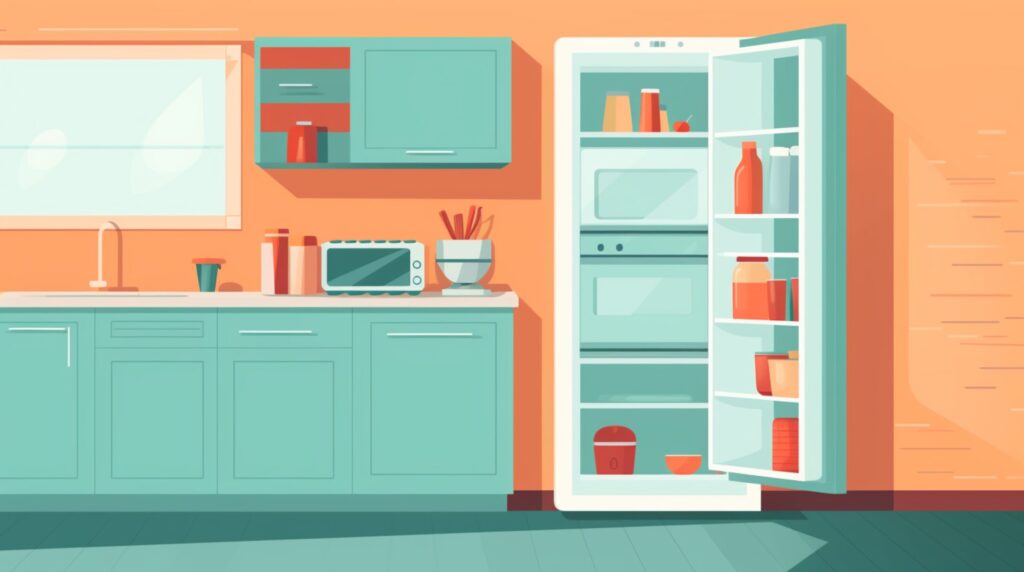The Impact of Visual Clutter on Productivity and How to Minimize It

We are reader-supported. When you buy through links on our site, we may earn an affiliate commission.
Visual clutter refers to the excessive amount of items and distractions that can fill your workspace, making it hard to focus. Typical sources include a disorganized desk, a stack of papers and a cluttered digital desktop with too many open tabs and unsorted emails.
This environment can reduce productivity by overwhelming your senses, causing stress and diverting your attention from critical tasks. By tackling visual clutter, you can streamline your workflow and enhance your ability to concentrate, boosting your efficiency and output at work.
What’s the Impact of Visual Clutter?
Visual clutter can be a significant distraction, pulling your focus away from essential tasks and reducing your overall efficiency. In fact, 55% of Americans report that clutter is a major source of stress. This stress can manifest psychologically, leading to increased anxiety and a sense of being overwhelmed.
When your workspace is cluttered, it’s not just the physical mess that affects you — the chaos can create a mental block. It makes it harder to process information and manage your emotions effectively. Addressing the clutter can alleviate these stressors and foster a more focused and serene work environment.
Identifying Common Sources of Visual Clutter
In your office, visual clutter can come from numerous sources. Typical examples include unorganized desks with papers and supplies and overloaded bulletin boards covered with notes and reminders.
However, it’s not just these prominent spots. Everything within your vision — like items on desks, shelves and walls — can contribute to visual clutter. This excess can make it challenging for you to locate necessary items quickly and can distract you from your tasks.
Digital clutter is equally disruptive. A cluttered desktop with scattered icons or a messy email inbox with hundreds of unread messages can hinder productivity. Moreover, other less obvious sources of clutter can also diminish your ability to focus. It includes having dozens of open browser tabs or unnecessary gadgets around your workspace. Tackling these areas can help clear your mind and create a more efficient working environment.
Strategies to Minimize Visual Clutter
Start by decluttering your desk, which is often the epicenter of office clutter:
- Clear everything off your desk and only return what you need daily.
- Use drawer organizers for supplies and documents to keep them out of sight but organized.
- Implement a filing system for paperwork and label folders for easy retrieval.
Next, extend these practices to other areas of your office:
- Evaluate items on shelves and in common areas, removing anything that isn’t essential.
- Set up designated storage areas for different supplies and equipment to avoid misplacement and accumulation.
For digital clutter, streamline your virtual workspace with these tips:
- Organize your desktop by grouping similar files into clearly named folders.
- Unsubscribe from unnecessary emails and set up rules to automatically sort incoming messages.
- Regularly clear out old files and uninstall apps you no longer use.
To maintain a clutter-free environment:
- Schedule a weekly 10-minute decluttering session for your physical and digital spaces.
- At the end of each day, spend a few minutes tidying your desk, preparing it for the next day.
- Review and adjust your storage solutions and organizational systems to fit your changing needs.
Tools and Resources to Help Reduce Clutter
Consider using drawer organizers and desk trays to organize your physical workspace effectively. These tools help segment your storage spaces, making finding and retrieving items easy.
Additionally, maximizing vertical space is one of the best ways to organize clutter. Opt for temporary shelves, which are excellent for storing items without damaging your walls. This approach saves floor space and keeps essential items within easy reach.
Adopting a minimalist design can be highly beneficial in maintaining a clutter-free environment. This design philosophy encourages you to keep what is necessary, reducing the likelihood of accumulating clutter.
Minimalism isn’t just about having fewer things. It’s about making the most of your space, which enhances functionality and aesthetics. Choosing multi-purpose furniture and decor that fit together creates a streamlined, efficient workspace that promotes productivity and peace of mind.
Psychological Benefits of a Decluttered Space
Reducing visual clutter in your workspace can bring significant mental health benefits, including lower stress levels and an enhanced mood. Studies show less clutter is associated with reduced cortisol levels, a stress hormone.
This reduction improves your overall well-being and helps maintain a clearer, more positive state of mind. When your environment is orderly, your mind is less distracted by disarray. It allows you to relax and focus better on the tasks at hand.
A decluttered environment also fosters an increase in creativity and energy. With fewer physical distractions, your brain has more room to think creatively, solve problems and generate new ideas. This boost in mental space often leads to increased productivity and enthusiasm for your work.
Moreover, maintaining an orderly workspace gives you a profound sense of control and calmness. This control over your environment can be incredibly empowering, making you feel more competent and self-assured in your professional capabilities.
The Economic Impact of Decluttering
Decluttering your workspace leads to significant economic benefits, primarily through saving time. By reducing the amount of clutter, you spend less time searching for documents, tools or files, which directly enhances your efficiency.
A clean, organized space allows quicker access to resources and smoother workflow transitions, boosting productivity. This efficiency saves time and translates into cost savings as you can accomplish more in less time. It reduces overtime expenses and optimizes work hours.
Moreover, effective resource management stemming from decluttered spaces can lead to notable cost savings. When everything has a designated place, there’s less likelihood of purchasing unnecessary duplicates or spending on replacing misplaced items.
Additionally, a streamlined workspace can reduce the need for extra storage solutions, which often come with recurring costs. By keeping your environment tidy and organized, you maximize the use of existing resources and spaces.
You can also avoid the financial burden of additional storage facilities and supplies. This approach lowers overhead and contributes to a more sustainable and economically efficient office environment.
Implement Strategies and Enhance Productivity
Start implementing these decluttering strategies today to experience a transformation in your productivity and mental clarity. A clutter-free environment maximizes efficiency and fosters a more focused and enjoyable workspace.










